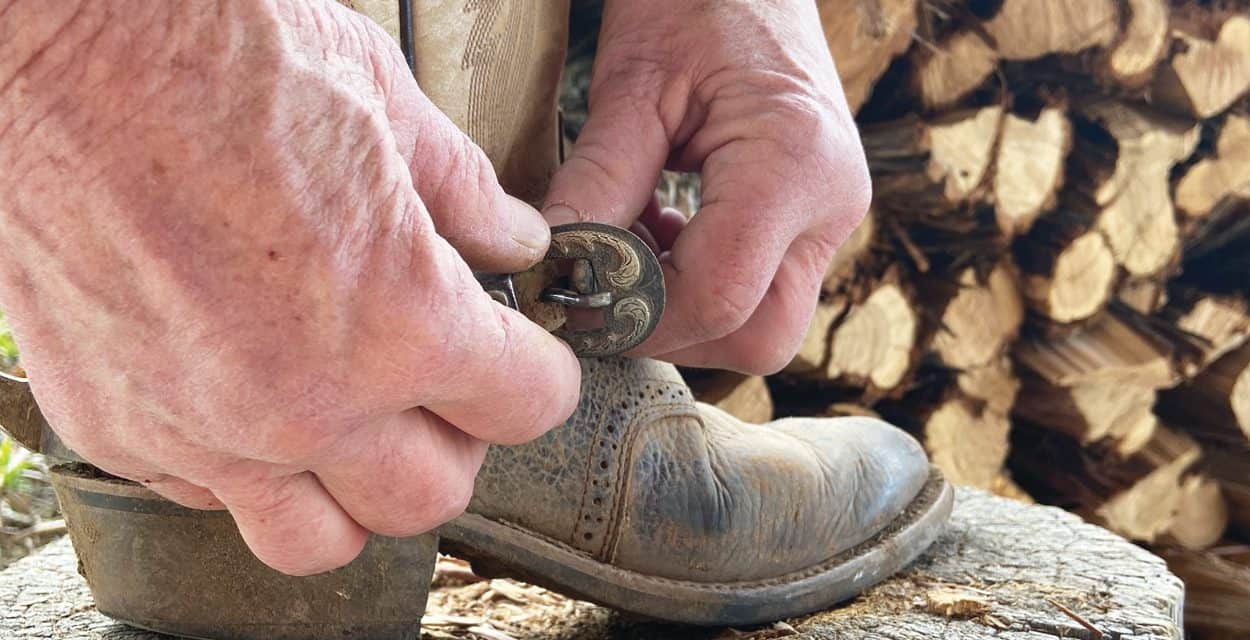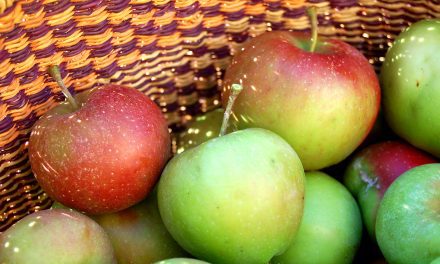Life and Death at Water’s Edge
By Christie Green

Illustration by Tracy Seidman
“How many acres do you have here, you and your mom?” I ask Jed C. Seidman. It’s late one Sunday afternoon in May 2020, and we’ve just stepped out of our pickups to get a visual on the immediate property boundaries of the Seidmans’ ranch. The plains southeast of Wagon Mound, New Mexico, break into deep canyons, ponderosa pines, and the slim ribbon of Vermejo Creek. This is the Canadian River watershed, where the water runs red, stained by the earth. The river’s 906 miles connect Colorado, New Mexico, Texas, and Oklahoma. Even though the Canadian is dammed five times before it reaches its confluence with the Arkansas River, it meanders from mountain summits to vegas to canyons, hydrating seed and soil as well as scaled, winged, furred, hoofed, and human beings. Water doesn’t speak the language of political boundaries, doesn’t care about the laws around human ownership or demand. Water curves its own course, trickles its own tongue, and recedes into deep depths when overdrawn.
We stand near the pond at the Canyon House, where six narrow drainages, including Ciruela and Vermejo Creeks, converge. Jed shakes his head and tells me, “That’s the wrong question to ask. You don’t put it in number of acres, but number of head. The question should be, ‘How many head of cattle do you run here?’”
In 1878, American geologist and explorer John Wesley Powell identified the 100th meridian west, the longitudinal line that runs straight up the Great Plains along the Texas panhandle’s eastern edge, through Oklahoma, Nebraska, South Dakota, North Dakota, and the Canadian province of Manitoba, dividing the West from the East, dry from wet. In his late nineteenth-century Report on the Lands of the Arid Region of the United States, Powell advised against dryland agriculture and development in the arid lands west of the 100th meridian, emphasizing the importance of careful irrigation plans in a region subject to frequent droughts. Powell’s assessment was informed by his own observations during extensive travel along rivers including the Colorado, Green, and San Juan, coupled with precipitation and climate data. His extensive surveys and mapping of the West contributed to the formation of the United States Geological Survey (USGS), and he served as its second director. He was also instrumental in conceiving of and establishing the US Bureau of Reclamation, which oversees water resource management.
But Powell’s cautious approach was ultimately rejected. Where he outlined land management plans based on watersheds and local community oversight, the government was more interested in identifying irrigation, cultivation, and development opportunities that would be driven by private interests and dollars. In a 1912 article on agricultural development in the Quarterly Journal of Economics, J. L. Coulter, then head of the US Census of Agriculture, projected, “Land now thought unavailable for agriculture will soon be found to be available or will be made so. Water will be drained from the land where there is too much and carried to the land where there is not enough.”
Powell resigned as the USGS director in 1894. From then into the Progressive Era of the twentieth century, rivers were deemed most attractive, in historian John Seelye’s words, “when they yielded to humanity’s needs.” Water became a commodity moved at will by power on paper to support agriculture, a booming mining industry, and urbanization.
I hear Jed’s pickup jiggle across the cattle guard as he leaves, and watch the red of the truck meander a slow path through straw-colored slopes. The herd of about twenty-five elk that has emerged from the piñon-juniper edge watches him, ears piqued, eyes alert. The five mature gobblers I watched through my hunting binoculars a few minutes earlier have already moseyed up the canyon. I imagine them making their way to the small stand of ponderosas on the adjacent ridge.
The elk graze, their muzzles like vacuum cleaners at Earth’s grassy floor. Three dainty does tiptoe near the elk, their mule-like ears twitching, rotating to shifting sounds. I yank off my jeans and white linen shirt, pull a single layer of camo over my legs, torso, and neck. I twist my hair up into the camo cap, pull the face mask over my cheeks, finding the eye and nose holes so I can see and smell.

With one shell in the chamber and three in the magazine, safety on, and the box call in my pocket, I slither my way around the shady spring-fed pond at the foot of the Canyon House, upslope from where the turkeys have congregated. So far, they haven’t moved, haven’t spooked at Jed’s vehicle driving away or my commotion of getting dressed.
Putt, putt, putt . . . I hear quick vocal pulses from the hens as they pluck bright green grass and watercress between their beaks, chattering and relaxed. I see three jakes, their stiff, short beards protruding from their feathered breasts. The difference between them and the mature gobblers is evident: the red, white, and blue of the gobblers’ bulging crowns, snoods, dewlaps, and caruncles are visible at a glance, whereas the jakes’ heads are smaller, grey, less distinguished.
I’m about thirty feet away, my back held straight by a massive cottonwood trunk, its craggy bark snagging the thin merino wool of my top. While I listen to the gals, I watch the jakes, itching to take aim before sundown. The three juvenile males take a curious detour around the fence line and, with a raucous flutter, launch themselves into the cottonwood. They perch and preen themselves on three lateral branches about twenty feet above me.
As darkness settles, I lower the shotgun. The turkeys’ scaled claws scratch the limbs overhead, shadows of fluffed bodies looming above me. An occasional tail ruffles as stars emerge.
Suddenly the ground rumbles beneath me. About five horses thunder so close I wonder if they’ll run me over. But, at about ten feet, they stop, snort, swish their long, untamed tails, and stare, nostrils raised high. We hold each other’s gaze, motionless. They rush off, whinnying with abrupt intensity. With the turkeys tucked in for the night, I stand, stretch, and make my way back to the pickup.
“My dad and aunt wanted to buy land. They had the idea of owning and running a working ranch,” Jed’s mother, Tracy Seidman, says, beginning the unlikely story of how she came to the ranch at Wagon Mound. “It was 1974 and my son was a few months old. My aunt saw that I wasn’t doing so well and asked if I’d go to New Mexico and find some land.”
Nearly a year has passed since my turkey hunt on her land, and Tracy has joined me for a socially distanced lunch at my home along the Santa Fe River. From the moment we meet, I’m struck by her small size and her hands. Squarish and thick, they show the wear of work. I imagine the reins she’s held, saddles she’s hoisted, bales she’s bucked. Soon I will learn that her hands are also those of an illustrator, a watercolorist, and a pine needle basket weaver. She is an unlikely combination of mother, rancher, artist—and storyteller.
“When I got to New Mexico, I put an ad in the Albuquerque Journal, ‘Looking for land.’ I got three hundred responses and put thirty thousand miles on my aunt’s car looking at ranches. After sifting through them all, I chose two, one in Abiquiu and the one at Wagon Mound.”
She made the selection and facilitated the purchase for her father and aunt, then fully intended to return back east, where she’d worked as a professional illustrator. When her aunt fell ill and couldn’t make the trip, she asked Tracy if she could stay in New Mexico and run the ranch.
Tracy knew how to ride a horse—English style—but knew nothing of the cattle business.
She said yes anyway.
An unlikely introduction from a mutual friend landed me here, hunting spring turkeys on this ranch. Was that luck or fate? I ponder this privilege as I lie in the back of my pickup, thick blankets and sleeping bags keeping me warm while the bloated moon presses into me. I toss and turn through the night. Just after sunset, I witnessed two young elk standing tall on their hind legs, pawing at each other in what looked like a playful sparring match. Now I picture them again, see them alternate their elevated paw prance with practical grazing.
I envision the turkeys and wonder if the moon illuminates their iridescent feathers. Could I see more than their silhouettes if I crept down beneath the cottonwood again? Would they be making middle-of-the-night sounds that I’ve never heard? I want to know the meaning of turkey tongue, the messages of elk tracks pressed into wet mud. Which way do they go and why? My words and ways of making meaning seem so dull, flat, one dimensional. Isn’t there something more than the rationale of the human mind?
The bulging brightness of the moon seems to grow weightier the longer I lie wide eyed beneath her. I finally surrender. I stop trying to sleep and decide to absorb the starry screen above, try to make myself nocturnal, too.
A west wind tousles my hair and rattles the nylon lawn chair. The elk, turkeys, deer, cottonwoods, and creek cast their dreams to the moonlight.
“We’re about fifty to sixty years behind in understanding what our underground water resources are,” Kate Zeigler, owner and senior geologist at Zeigler Geologic Consulting, tells me by phone.
Ziegler consults with rural communities and agricultural producers about groundwater resources and has worked with the Northeast Soil and Water Conservation District to monitor groundwater volume and health since 2010. In 2014, she started working with the Mora-Wagon Mound Soil and Water Conservation District, and met Tracy.

“These people know their land better than I ever will. They’ve lived here their whole lives. I’m trying to provide the scientific data that tells the story of what’s happening down deep, why wells aren’t pumping as much or are drying up. We’re trying to adapt to changing weather patterns and the fact that aquifers aren’t recharging like they used to,” Zeigler explains. “Groundwater is invisible so you can’t see when the tank is low. But we can at least measure the bottom of the well and the rate of decline so folks know how much time they have.”
She says that among the seven counties and five hundred wells her firm is monitoring in New Mexico, 85 percent are not recharging within a human lifetime.
The moon sets. I rise, sit with the morning silence, and sip my creamy Earl Grey, itching to get going. I’m up a good two hours before daylight, well before the turkeys will take flight. Maybe I’ll head down to the spring early and get set up, listen for turkey talk at daybreak, and be in the best position to take aim once they’re on the ground.
I drive down the meandering dirt road, then follow the creek in. No elk. No deer. No horses. I set up against the base of a small cottonwood north of the main roost and swing the 20-gauge around in a 180-degree swath, making sure I have as many shooting lanes as possible. The spring illuminates dawn light in a dappled, watery mirage.
Just when there’s enough sunlight to make out silhouettes, another rumbling quakes beneath me. The little herd of horses rushes toward me. I strain my eyes, noticing something different. There is a new shape now, a slight, wobbly-legged foal with a sprightly swishing tail.
A mare gave birth during the night. The little one holds my stare as the sun rises and the turkeys descend.
“There were people from all sides of the table at those meetings,” Tracy tells me, speaking of the numerous advisory and leadership roles she stepped into once she’d adjusted to her new life, including thirteen years on the Interstate Stream Commission and six years on the board of trustees of the Valles Caldera National Preserve. She also chaired a planning committee for New Mexico Water Dialogue. In that committee, she says, “There were twelve of us from all walks of life—ranchers, farmers, people from the pueblos and folks from the city—we had to sit in the room together until we got a plan figured out. We just did what it took, and, after all was said and done, we developed a water plan and became friends, too!”
In an instant, all hens and jakes scatter, heading down the valley, across the fence, and toward the neighboring property. They did not do what I expected and are all now far beyond shooting range. I reach for the box call and whip off a few hen yelps, trying to lure the jakes back. One stops, turns, listens, and gobbles. I watch him putter around, pecking at the ground and looking for the hen. I call once more, wait for him to turn his head, and then lower myself to the ground and crawl closer.
He gobbles again, fluffing his wings and fanning his tail. There’s a pile of slash wood in the middle of the field that I crawl behind, about fifty yards from him. On my knees, I pull another call and watch him do something unlikely: he bends down and pushes himself beneath the lowest strand of barbed wire, coming closer to find the mystery hen that keeps calling.
Once he comes within the thirty-yard range, I rise to my knees, swing the shotgun toward him, and fire.
Although wildlife impact the habitat and vegetation on the ranch, especially as they migrate and congregate along the creek and springs when surface water elsewhere dries up, cattle are the primary animal Tracy manages. When I ask about the number of acres required to support each steer or cow, she says, “What you’re asking about is carrying capacity. In other words, what can the land support? That’s a moving target depending on the year.” Tracy sips her black coffee, takes a bite of warm buckwheat cake and goes on, “In a few good years, we ran five hundred mother cows, averaging eleven hundred pounds each, year-round. When I average what ten different people tell me my carrying capacity should be, I come up with twenty-three acres per animal.”
As she rattles off numbers of cattle, memories of wetter or drier years and when she had to send the cattle to the shipping yard six weeks early in the late summer of 2020, I’m struck by her understanding of relationships. I hear someone who’s witnessed extreme unpredictability in weather and an influx of annual weed species, and who’s a keen observer of one of the most important elements in the ranch system—grass.
“People think that ranchers raise cattle, but that’s not really true. What we raise is grass. The cattle are just a tool to harvest the crop. Taking care of the land and paying attention to the health of the ecosystem is the first and essential priority.”
A sigh and silence follow. Then Tracy perks up and says, “If we get late summer / early fall rains, followed by a few weeks of warm-enough weather, the warm-season grasses head out. Nothing is more lovely than pasture full of mature grama grass. Looks like a field full of false eyelashes.”

“How are folks adapting to less water and more unpredictable weather?” I ask Zeigler.
“Well, they’re now shutting wells off after the cattle have been shipped away, rather than running them year-round. They’ve also experimented with less water-intensive crops like milo or feed-grade corn. It all depends on the fluctuation of crop prices. They’ve got to plant what they need to make enough money for their families.”
Zeigler continues, “In addition to managing water on the ground, there’s policy and different stakeholders. There’s so much distrust among groups and some talking down to others thinking they—the politicians or the scientists—know better. But really, all of us need to come to the table. We try to get the data into the landowners’ hands so that they can at least be part of the conversation.”
I press further about how much time there is left, but Zeigler doesn’t give a definitive answer. I know the question is loaded, and that each well, aquifer, and ranch is different.
“These people are family to us now,” she says. “We get upset when things happen out there. I tell them ‘We will be with you to the bitter end, until the last drop. We’re with you.’”
After the turkey has been hit and tumbles, his right wing arcs skyward and his feet pedal slowly as if trying to find stable ground again. I go to him, put the shotgun down and place the weight of my body on his. His breathing lifts my torso slightly; he blinks and breathes one last time. His final flutter ripples through me as I, too, exhale.
In Powell’s assessment of pasture lands west of the 100th meridian, he noted the relationship among water, grass, and grazers: “Though living water is not abundant, . . . isolated springs and brooks will in many cases furnish the water necessary for the herds that feed on the grasses. When springs are not found wells may be sometimes dug, and where both springs and wells fail reservoirs may be constructed. Wherever grass grows water may be found or saved from the rains in sufficient quantities for all the herds that can live on the pasturage.”
Powell was unaware that aquifers would be tapped for irrigation, but he knew that drought would be a recurring presence in these arid lands. According to the National Integrated Drought Information System, 54 percent of New Mexico is currently in “Exceptional Drought”—the most dire category—and 80 percent of the state is in “Extreme Drought.” Impacts of these extremes include the closure of public lands, extreme fire danger and fire restrictions, dry acequias and subsequent agricultural irrigation with well water, high livestock feed costs and low prices, low crop yields, and wildlife encroachment on developed areas. The aquifers, which are just beginning to be understood and measured, are not replenishing within human lifetimes.
Are we now in the position of accepting the inevitable, or is there hope for survival and even replenishment with new water conservation practices? Through intimate proximity and inquiry, we may realize our place within nature, find ourselves not as distant consumers but students. We can learn about balance and reciprocity from the ways of water, wildlife, and habitat—but will we?
When Tracy considers my question about what she’s learned and how she adapts, she offers a humble response. “Pay attention. Be diligent. Don’t graze the same pasture the same way every year. Leave some forage behind. Leftover grass is the best insurance policy against drought, changes in the market, and variations in the weather. Listen to different opinions and ideas. But trust your gut.”
I’m thankful for the two-hour drive from the ranch at Wagon Mound to Santa Fe. I don’t want to let go of the elk, deer, newborn foal, or the moon. I want to take what I’ve learned from the spring with me: there is value in slowing down, meandering, and recharging down deep.
What of them inside me will slip away as the miles click closer to town? What will the cottonwoods hear tonight? Who will sip the creek?
The seat next to me holds an unlikely passenger. The jake rests, stiffening with each hour past death. His claws curl, cold. No branch to grip now. I get to see him up close, his feathers with iridescent shine and fine fringe.
Once home, I will lay him on the cutting counter to skin and butcher. I will stretch his pelt wide, fanning his wings and tail, and salt the underside, then pin him to the board where he’ll dry over the coming year.
The organs I tugged from his core rest atop the smooth boulder west of the Canyon House. Which scavenging birds and mammals will become turkey tonight? What of him will they taste and carry inside their own bodies? Will the Vermejo and Ciruela linger aboveground long enough to quench future thirsts?
Edible celebrates New Mexico's food culture, season by season. We believe that knowing where our food comes from is a powerful thing. With our high-quality, aesthetically pleasing and informative publication, we inspire readers to support and celebrate the growers, producers, chefs, beverage and food artisans, and other food professionals in our community.













